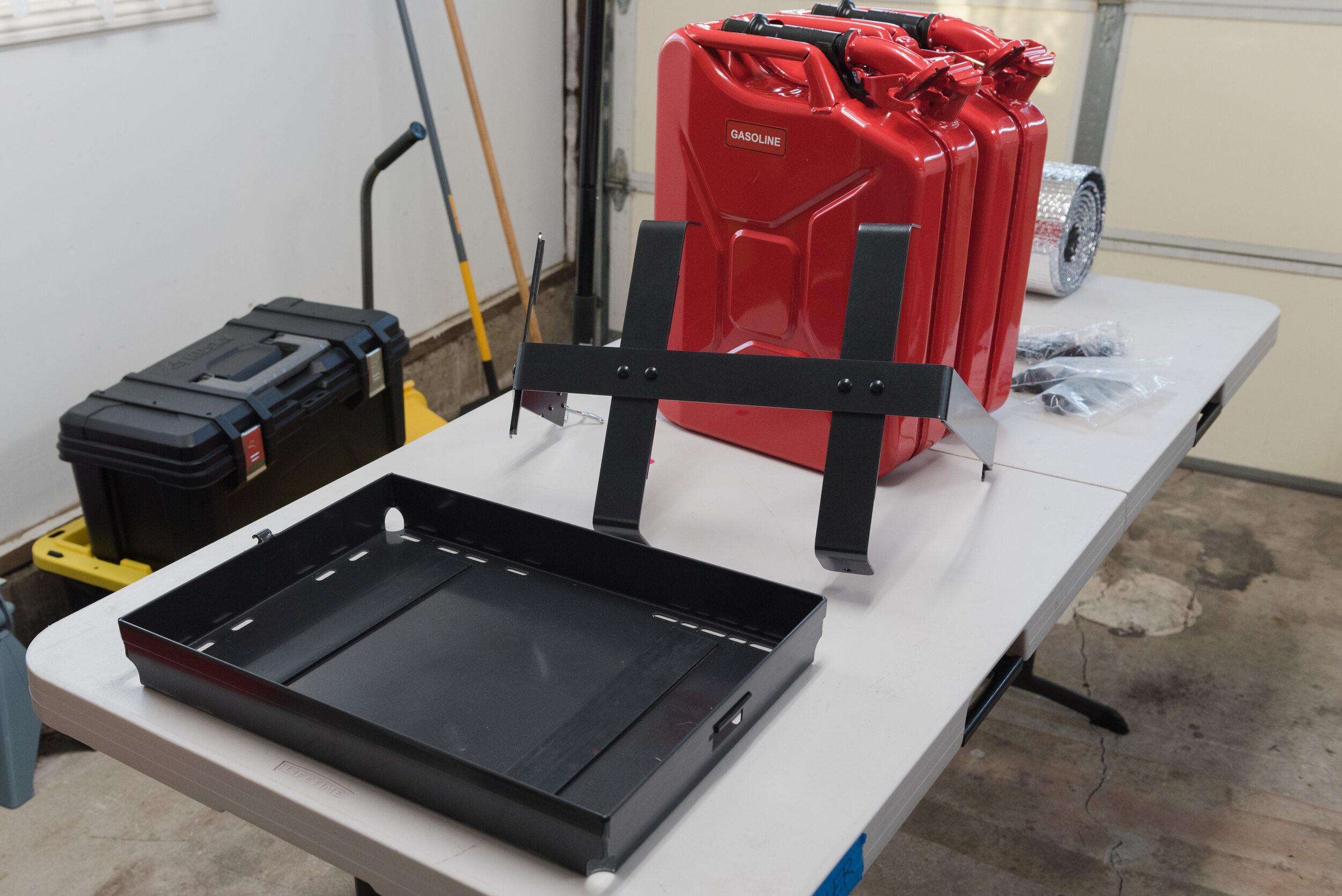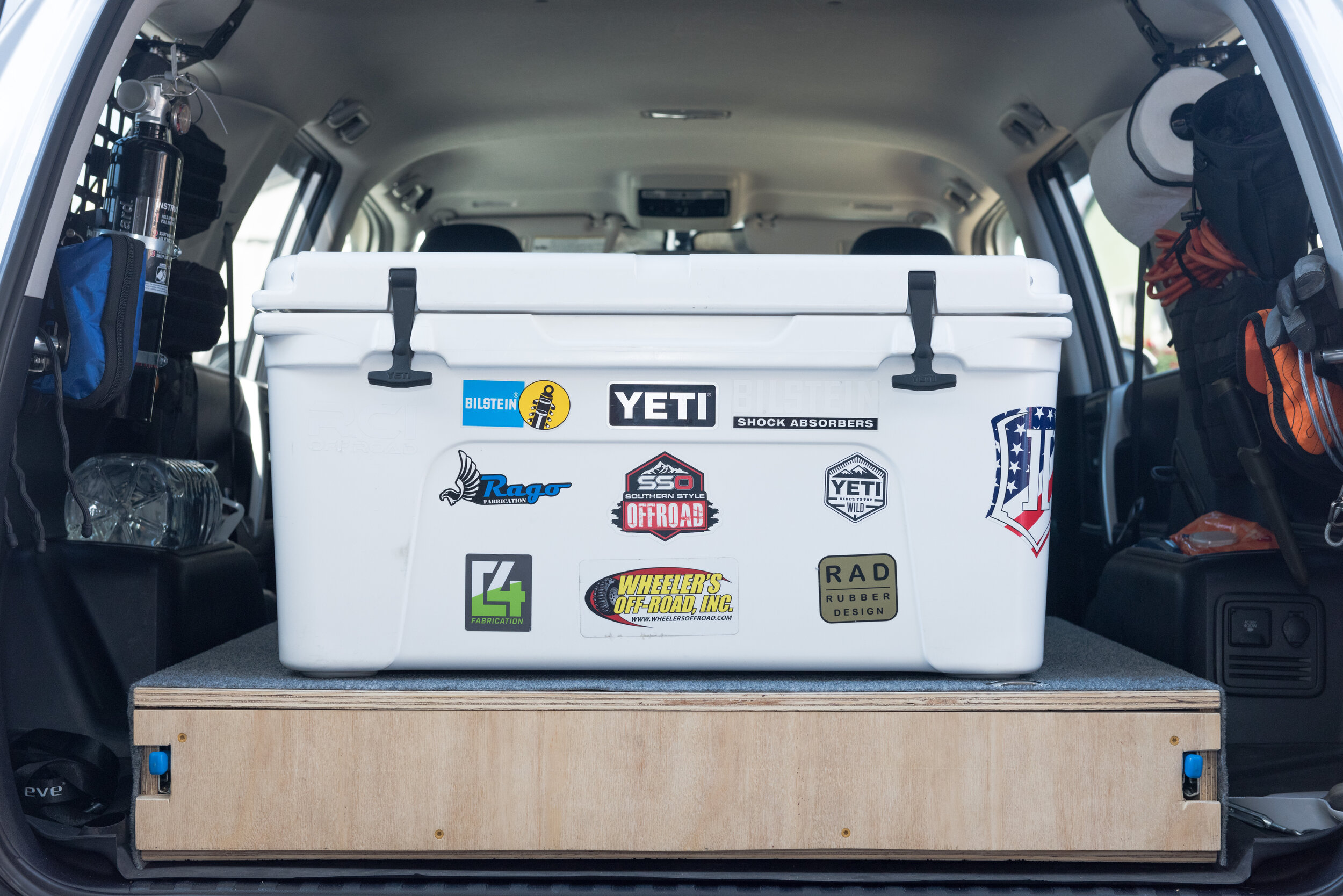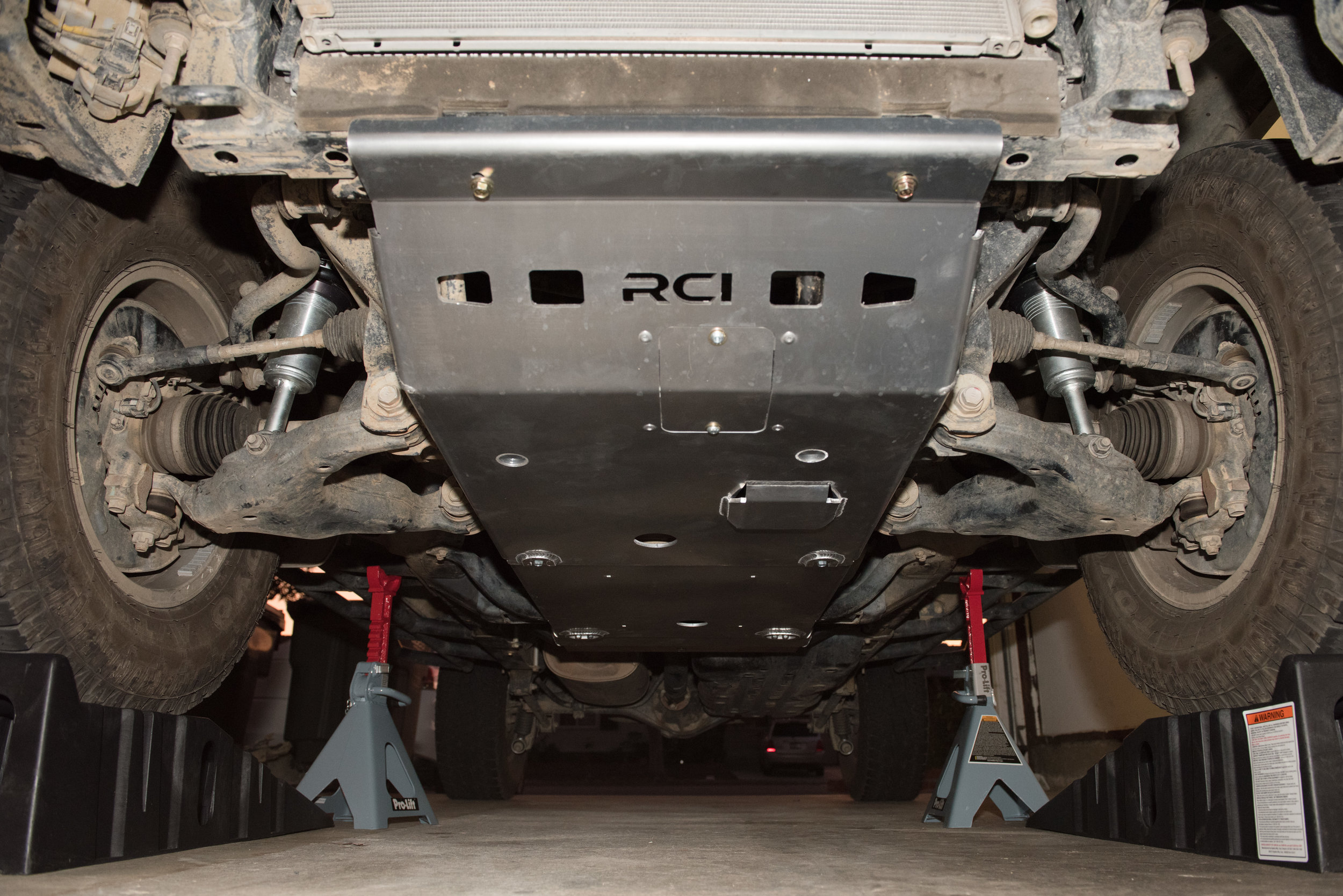There’s a lot of sensitive parts in the 4Runner’s engine bay. Stuff that shouldn’t get wet, muddy, or have debris lodged into. A pair of flexible rubber splash guards in each wheel well (spanning between the body and frame) minimize unnecessary debris thrown up by the tires from entering the engine bay. A few days ago I noticed that one of the engine splash guards was slightly torn and a few of the plastic push-tabs holding the guard to the frame were broken or missing. Lacking plastic tabs, I secured the engine splash guard with some black duct tape… a temporary fix.
After some thought and deliberation I decided not to go the cheap route and order a replacement OEM engine splash guard. Overall, the OEM engine splash guards are floppy, flimsy, thin, and apparently tear way too easily! The plastic push-tabs are also pretty flimsy (like most others on the vehicle.)…
Thankfully I had known of Rad Rubber Design Engine Splash Guards for a while but did not think I’d need to replace my existing splash guards so soon. Their product is 1/8” thick, made of durable nitrile rubber, and come with much heavier duty plastic push-tabs. I ordered on a Thursday and received the shipment (from Florida, mind you) within a week. The splash guards came rolled-up in a taped plastic wrapping shipped via USPS Priority mail. Note: cute dog did not come in mail.
I unwrapped the goodies in my garage and placed the engine splash guards on a piece of cardboard to prevent garage dirt from embedding on their surfaces. The package contents included:
21 5/16” high-quality plunger-type push tabs (17 for use, 4 extra)
2 1/4” plastic barbed-type push tabs
Two driver’s-side and two passenger-side engine splash guards
Swag sticker and business card
The first step was to remove the existing engine splash guards. This is most easily done by turning your wheel all the way in one direction, which will open up plenty of space to remove one of the two engine splash guards in each wheel well. For example, if you point the wheels hard-left (shown below), there will be plenty of room to replace the driver’s side front and passenger’s side rear engine splash guards. Note, your engine must be turned on for power steering to be enabled - you won’t be able to move your wheels otherwise.
Use an angled plastic trim remover to remove all tabs on the accessible OEM engine splash guards. The plastic push-tabs can be thrown away as they will not be reused. Note that the front-most engine splash guards are connected at one point to the side shock frame support.
Here is a comparison of the old versus new engine splash guards after removal, and a comparison between their different thicknesses. I’d say Rad Rubber Design’s engine splash guards are 4-5x thicker than the OEM stuff. Bulletproof!
The next step will be to insert the plastic plunger push-tabs and barbed push-tabs into the Rad Rubber Design engine splash guards. The 1/4” barbed push tabs are inserted into the front engine splash guard’s hole that aligns with the side shock frame support. Be careful not to fully depress the plunger heads while inserting the body into the new engine splash guards. This action is what pushes the plunger wider and locks it into the frame holes.
Once the new push-tabs are in, the engine splash guards mount in the same exact holes as the OEM guards. Carefully push each plunger in first (without depressing the heads), then push in each plunger head. Some heads took more effort than others to fully depress. I used the hard flat part of the plastic pry tool since my fingers were too squishy.
Changing of the Guards. Heh.




























